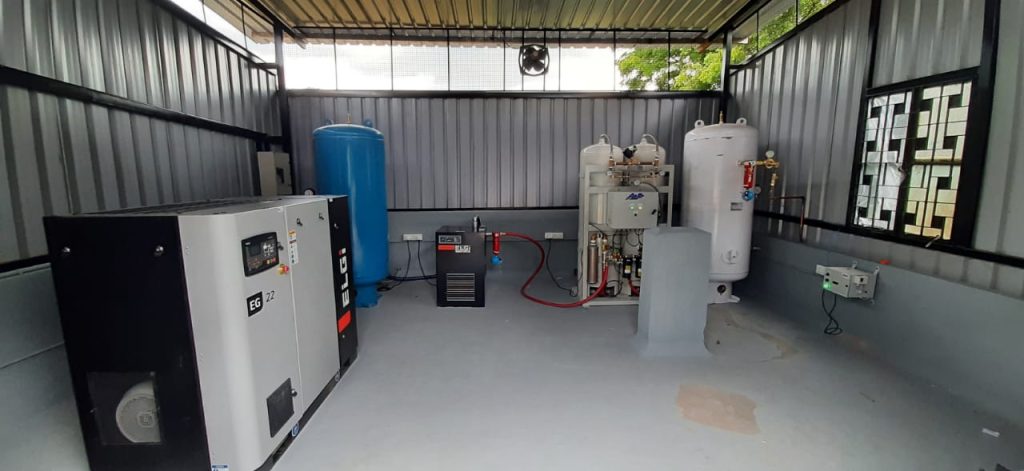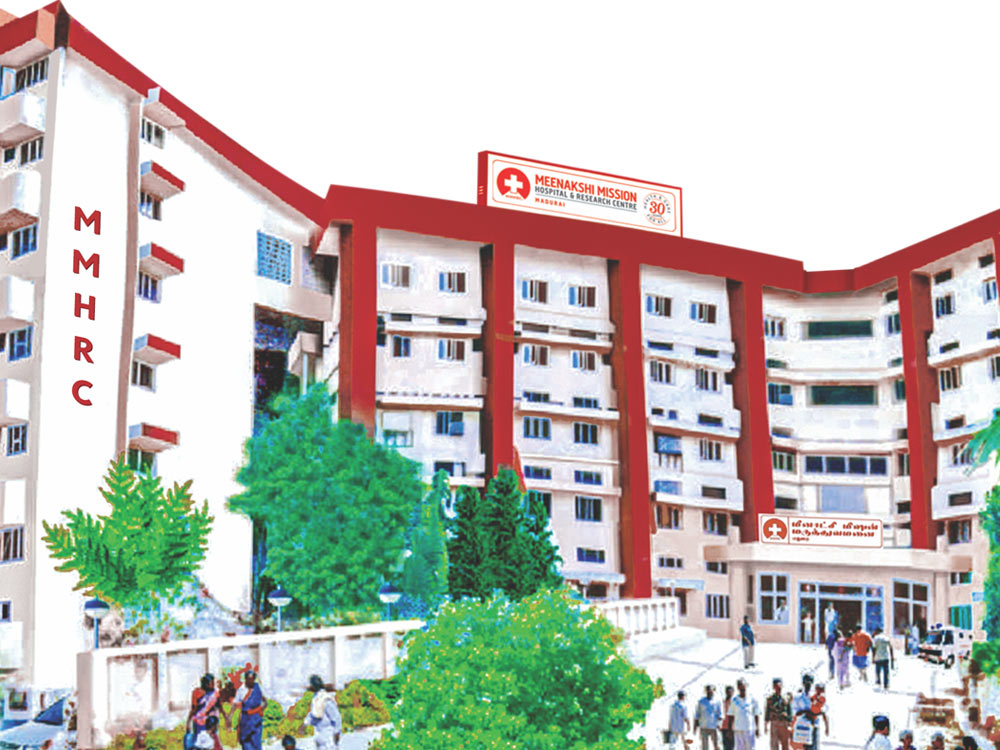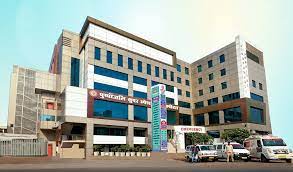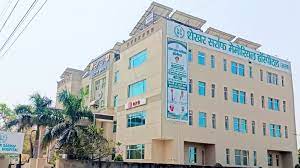
Oxygen Plant in a Hospital - Airox Technologies
Having such a system installed within hospital premises dramatically boosts emergency readiness, especially during surgeries, intensive care treatments, respiratory emergencies, or public health crises like pandemics. It eliminates the dependency on third-party suppliers and the logistical delays of cylinder transport, ensuring uninterrupted oxygen availability at all times. This enhances patient safety and minimizes the risk of supply shortages during critical moments.
These plants are engineered for high efficiency and minimal maintenance, with configurations available to match the specific needs of facilities—from small clinics to large multi-specialty hospitals. Advanced automation features, integrated alarms, and oxygen purification units help maintain consistent quality and compliance with international medical standards.
Adopting in-house oxygen generation not only improves self-sufficiency but also provides long-term economic benefits. Hospitals can avoid the recurring expenses associated with cylinder purchases, handling, and transport. Additionally, this approach significantly reduces environmental impact by cutting down on fuel usage and emissions linked to conventional oxygen delivery logistics.
Key Advantages of On-Site Oxygen Generation
- Uninterrupted Oxygen Availability
Hospitals benefit from round-the-clock oxygen production, even during periods of high demand or emergencies. This eliminates delays caused by supply chain disruptions.
- Cost-Efficiency
Operating expenses drop significantly as recurring costs for purchasing and managing oxygen cylinders are removed. Hospitals also save on labor, administrative efforts, and oxygen wastage.
- Improved Safety Standards
Cylinder-based systems carry risks such as pressure-related accidents and fire hazards in oxygen-rich environments. In-house generation reduces these risks and simplifies storage.
- Eco-Friendly Operation
Since the plant uses only electricity to produce oxygen, it avoids the need for fuel-based transportation, reducing emissions and promoting sustainable practices.
- Smart, Automated Systems
Modern systems come equipped with intelligent controls, oxygen monitoring, alarm integration, and remote operation capabilities. This ensures high reliability with minimal manual intervention.
Technical Components and System Overview
A typical oxygen generation system includes:
Air Compressor and Filters: Draws in and conditions ambient air by removing moisture and contaminants.
Adsorption Towers with Molecular Sieves: These selectively separate oxygen by removing nitrogen.
Storage and Pressure Boosting Units: The generated oxygen is stored at around 4.5 bar, with optional boosters to raise pressure up to 150 bar if filling cylinders is needed.
Medical Gas Pipeline System (MGPS): Transports oxygen safely to ICUs, operation theaters, and patient wards with built-in alarms and pressure regulation.
Systems are custom-built to meet the demand of any healthcare facility, ranging from small setups delivering around 600 liters per minute to larger installations capable of supporting extensive infrastructure—while ensuring consistent pressure and purity standards.
Why Hospitals Should Act Now
Given the growing challenges in healthcare logistics, investing in a hospital-based oxygen plant is both strategic and time-sensitive. The benefits include:
- Complete control over oxygen supply
- Predictable, lower operational costs
- Enhanced safety protocols and environmental responsibility
- Reliable performance during emergencies and high-demand scenarios
By partnering with an experienced provider such as Airox Technologies, hospitals can implement customized, field-proven solutions with robust support and assured performance—making this a smart, sustainable, and life-saving investment for modern healthcare facilities.
For more information about Airox Technologies visit us at https://airoxtechnologies.com/



